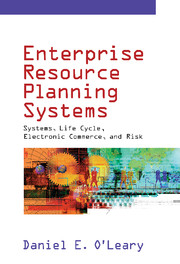6 - Technology Enabled versus Clean Slate Reengineering
from PART TWO - ERP SYSTEMS
Published online by Cambridge University Press: 05 June 2012
Summary
The primary tools for capturing and implementing best practices are enterprise resource planning (ERP) systems. As noted by Hammer (1997), “SAP implementation equals forced reengineering.” A vice-president of Cap Gemini remarked that, regarding SAP implementations, “it's rare when you don't have to do some kind of reengineering” (Gendron 1996). Gendron goes on to call ERP “the electronic embodiment of reengineering.” Because reengineering is so tightly tied to ERP implementation, firms must address the issue of using clean slate versus technology enabled reengineering.
The purpose of this chapter is to investigate the relationship between these two types of reengineering. In particular, this chapter elicits some of the advantages and disadvantages of each approach, focusing on why some firms have chosen one or the other approach as part of their reengineering efforts. In addition, this chapter investigates some of the firm characteristics that are likely to lead to using a particular reengineering approach.
Reengineering Tools and Technologies
Hammer's (1990) ideas for reengineering were initiated before there were tools to facilitate reengineering. Many early reengineering efforts were designed to “obliterate” existing processes, but there were few tools to guide firms as to how the processes should be reengineered. As a result, one of the primary reasons that many reengineering efforts failed was the lack of a sufficient tool set to facilitate reengineering. An early analysis (CSC Index 1994) of tools that were used in reengineering focused on process value analysis, benchmarking, competitive analysis, and activity-based costing.
Information
- Type
- Chapter
- Information
- Enterprise Resource Planning SystemsSystems, Life Cycle, Electronic Commerce, and Risk, pp. 73 - 86Publisher: Cambridge University PressPrint publication year: 2000
